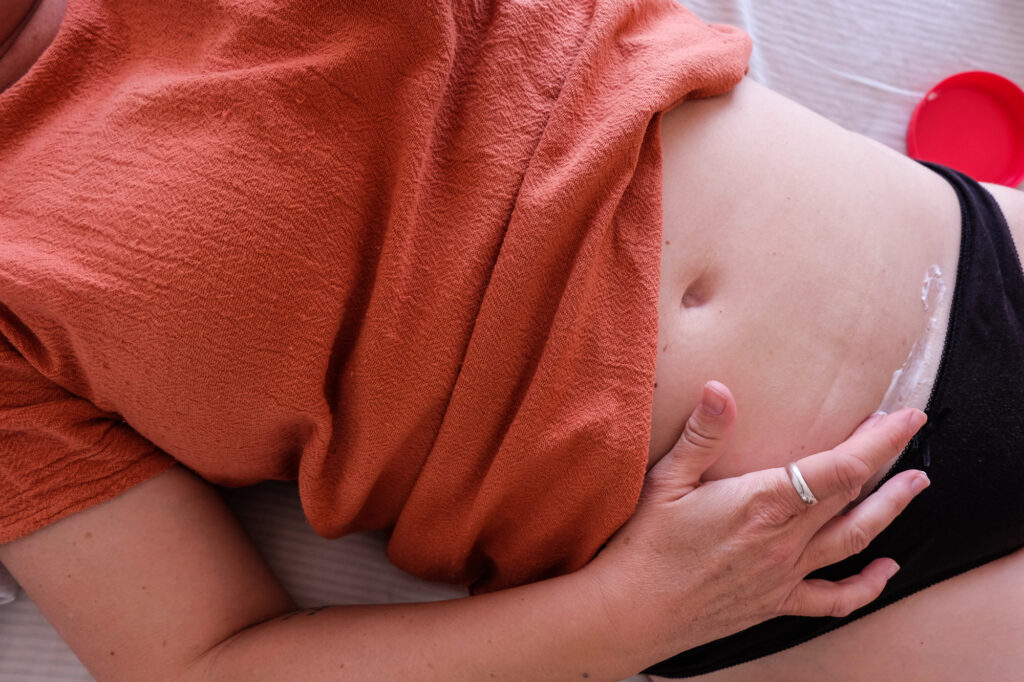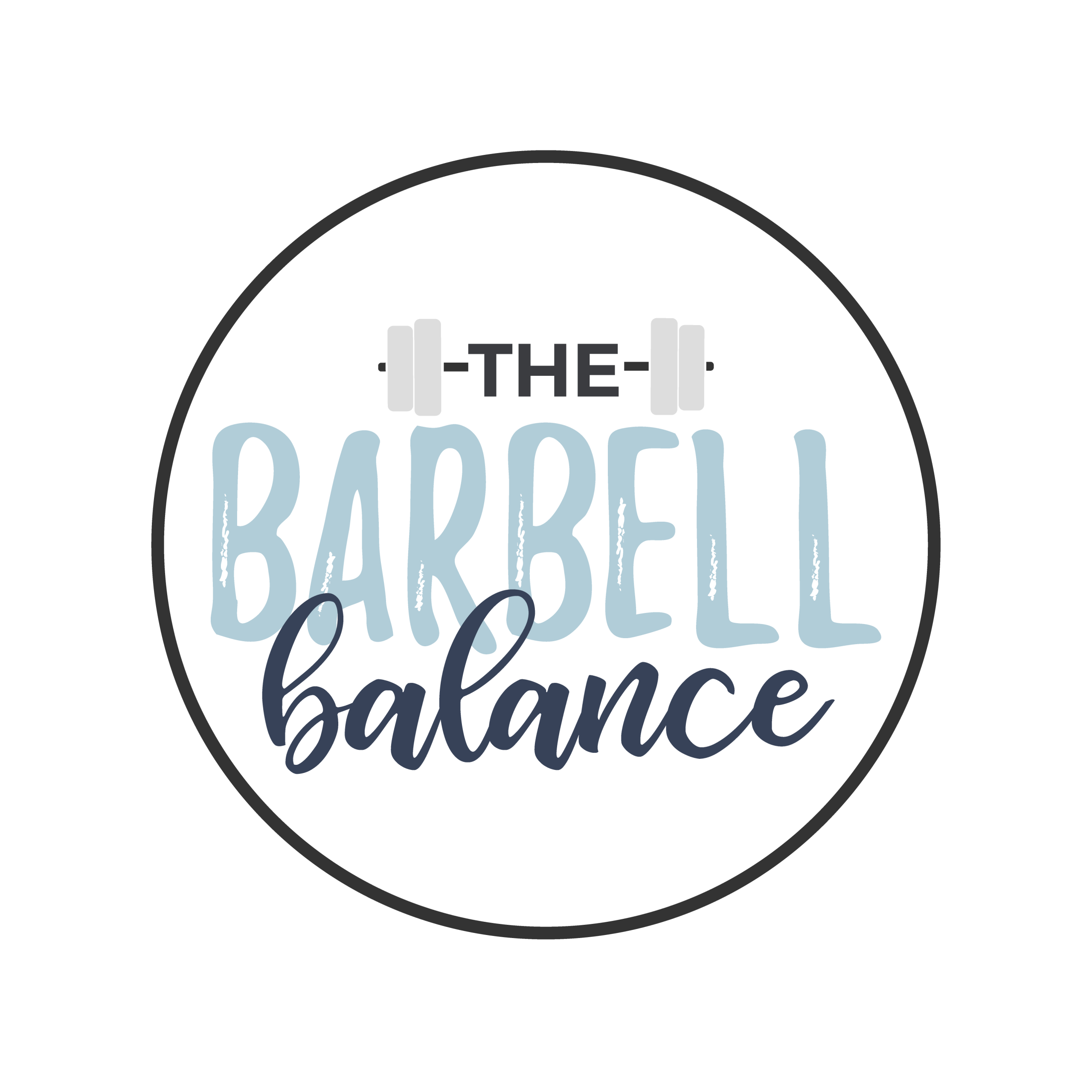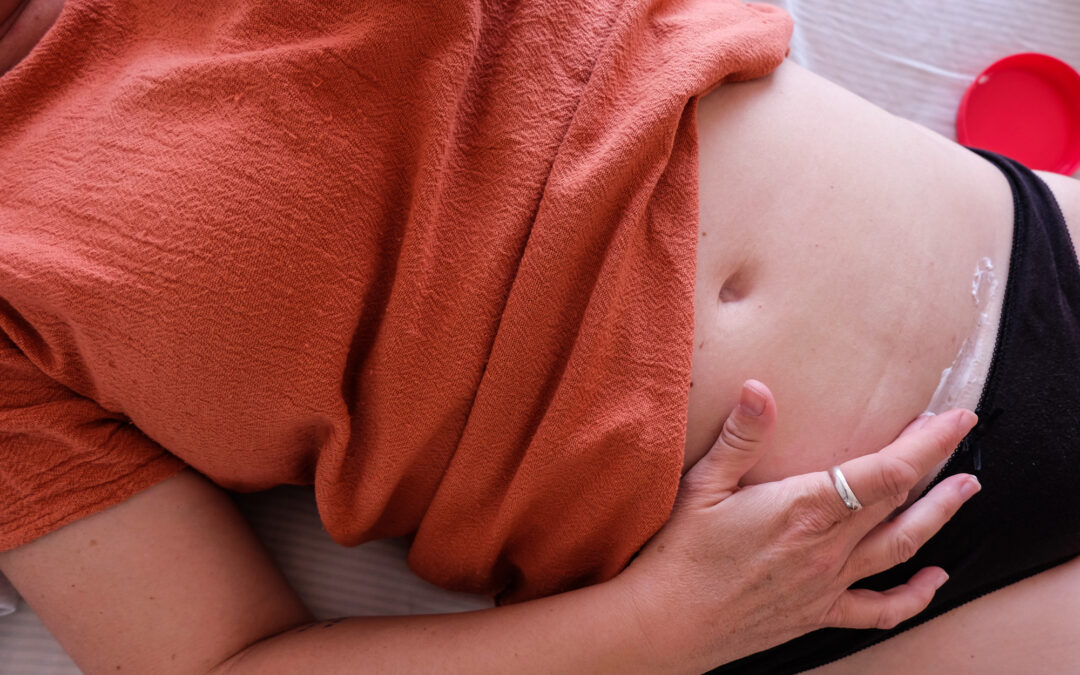How To Exercise With Hip Pain Post C-Section: 5 Steps To Managing Hip Pain.
Hip pain is a common phenomenon
The most common pain women experience is sciatica, pelvic girdle pain (pain in the vaginal area, as pain in the
There were times when getting out of bed was excruciating. My right leg couldn’t move thanks to
Then there were times getting off the floor after playing with my small children. Move the right side of my hip in a way it’s didn’t like, on the floor I’d stay until the pain worked its way out.
Certain movements like the Turkish Get Up would aggravate my the middle of my pubic bone. Anytime I’d come into the lunge and move into the standing position, this sharp pain would shoot through me. Thankfully, this was quick.
Typically, we are told to avoid movements that hurt. The general thought was
Yes, pain may be a part of the healing process, but pain can be managed and treated in most cases. And no, you don’t have to give up on exercise or movement you like.
Scar Massage
Scar massage is helpful. Scar massage works by improving the mobility of the scar. You see, if the scar has little to no movement, it may affect how nerves, joints
Keep in mind, scar massage may need to be done several times before noticing a change in discomfort. And you may need to occasionally as well, much like you’d work on mobility every so often to keep your joints moving well.

So if you’re feeling pain in the back or front of the hip on occasion, it may be a good time to massage your scar.
Personally, I don’t like using lotions because using oil makes my fingers too slippery. But you can use vitamin E, olive, or coconut oil works well.
The general recommendation to begin scar massage is 6-8 weeks. This allows time for the incision to heal and close.
Training You Core And Pelvic Floor
Contrary to popular belief, you’re not exempt from pelvic floor dysfunctions or symptoms like peeing during workouts, feeling bulging or pressure in the vagina, or pelvic floor or vaginal pain.
It normal to feel like your core is weaker after a c-section. This may explain some hip pain during certain movements.
Starting with gentile breathing and Kegels, and core connection exercises work well.
-
Start by laying on your back, with your feet flat on the floor.
-
Put one hand on your chest and the other on your belly.
-
Inhale through your nose, breathing into your chest and belly.
-
Exhale like you’re blowing through a straw and gently (2-3 out of 10) life your vaginal opening up and in.
From there, coordinate this breathing technique with
As you get the hang of this, you can progress to adding equipment like resistance bands, dumbbells, and kettlebells. This may take a few minutes, days, or even weeks. There are no timelines.
Strength Training
Strength training is an excellent way to help reduce pain in your hips. As you become stronger, you have more muscles pitching in. Not to mention as you build strength, your core, and pelvic floor
When starting out, it’s best to start with 8-12 reps using light to moderate weight. Generally speaking, if you’re able to do 8 reps at your chosen weight, you should be able to add on 2 additional reps.
If you’re fatigued at 8 reps, it may be too much.
As you progress to heavier weight and more complex movements, you should be able to do so without pain.
If you’re returning to strength training
Rest And Recovery
If you’re finding you’re in pain, no matter how you’re working out, take a break. This could be an extra minute during your workout or take a day.
Your body works differently when you’re tired as opposed to fully rested. So make sure you’re getting enough rest and recovery between workouts as well as night time.
Modify
Let’s say you want to do more explosive movements, but when you do, you have a nagging pain.
Do you have to omit this particular exercise from your program?
No.
Modify by performing it differently or breaking it into multiple exercises.
In my example, I used the TGU. The exercise itself felt good until I came up into standing from the lunge.
In the starting position, I was able to roll upward and a single-arm overhead static lunge felt fine. So I worked on building strength and coordination breaking the TGU in two separate exercises.
You can do this with snatches by working on your snatch pull, working your way to the front and to the overhead squat. And when you’ve built up the strength, you can work on
You can make modifications by:
-
Using your body weight, lightweight or resistance bands.
-
Changing the tempo of the exercise by speeding up or slowing down
-
Changing the stance of the exercise. For example, narrowing the squat stance if a wide stance is giving you trouble.
-
Breaking down the exercise in separate movements. Take the TGU for example. If doing the full exercise causes you pain, start working on the roll first and work your way up
-
Decrease range of motion
The Takeaway
C-Section is major surgery. And it may take some extra time to heal. But you don’t have to give up on the training you enjoyed before pregnancy. With a few simple
In my 1:1 12
Tap here to read this page and see if The Body Revitalization Program is a good fit.
Ciao,
Terrell


